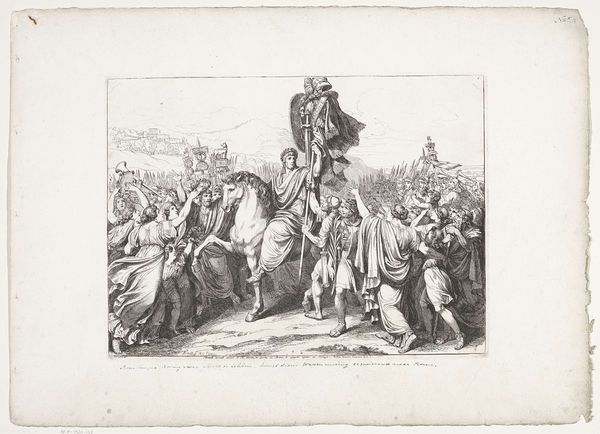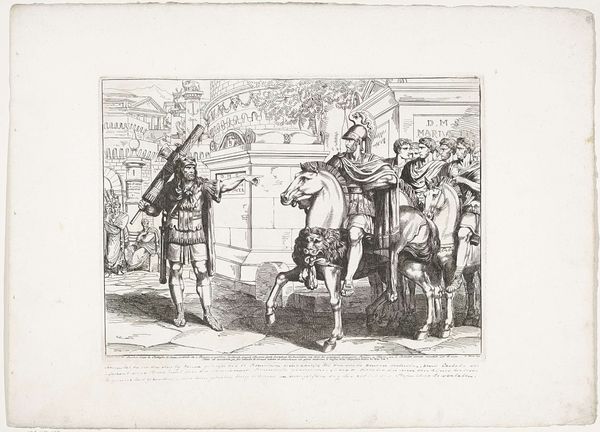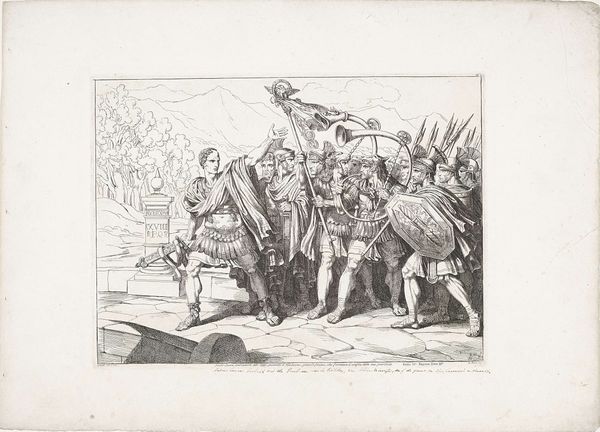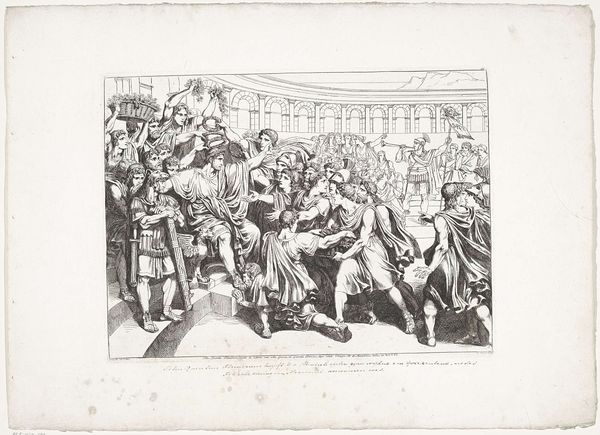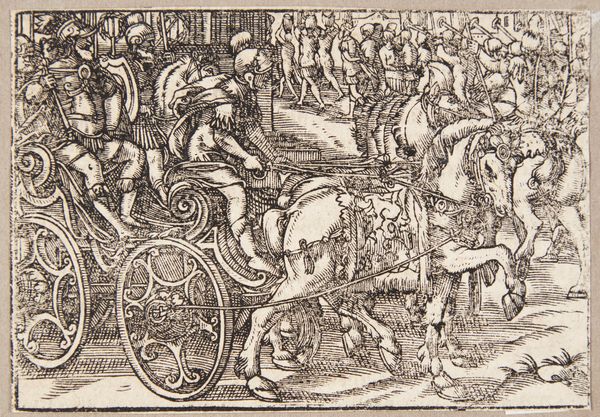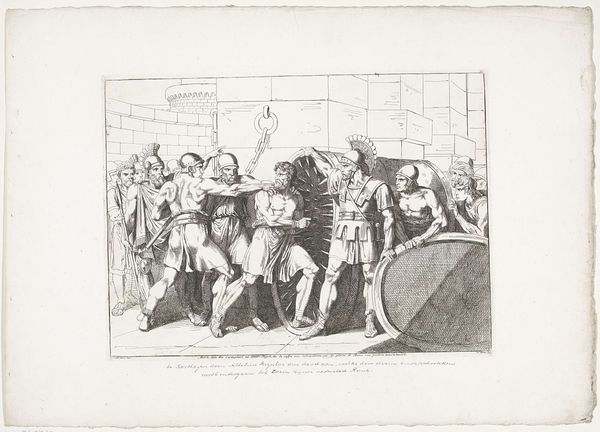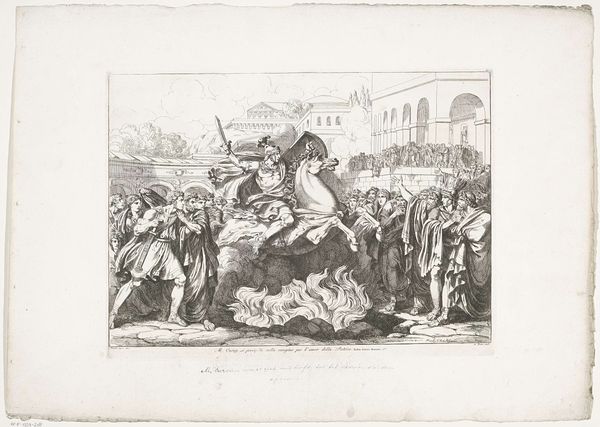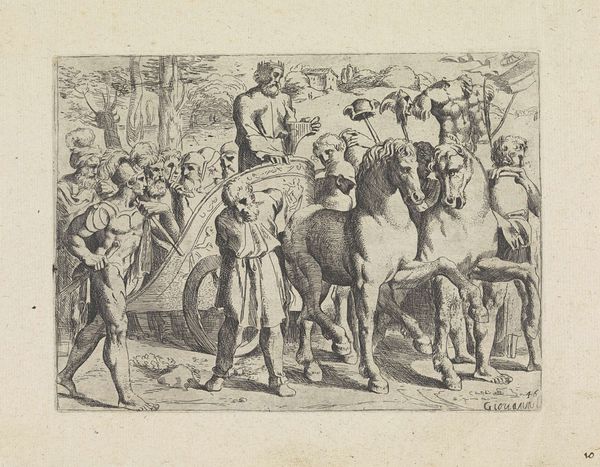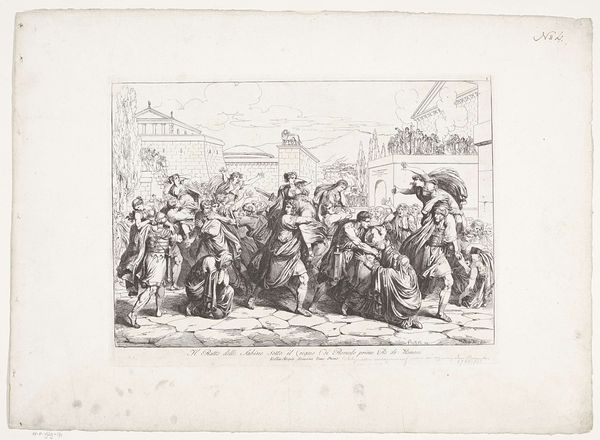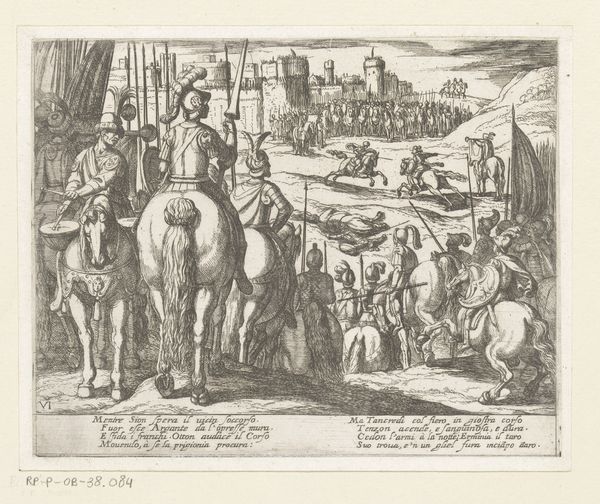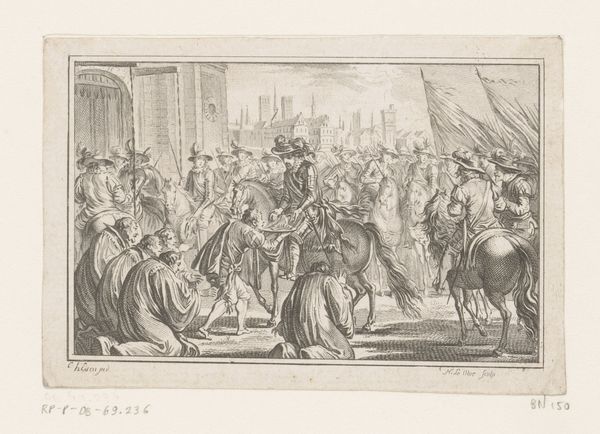
print, engraving
# print
#
pen illustration
#
pen sketch
#
old engraving style
#
figuration
#
ancient-mediterranean
#
line
#
history-painting
#
engraving
Dimensions: height 318 mm, width 431 mm
Copyright: Rijks Museum: Open Domain
Curator: This is Bartolomeo Pinelli's engraving from 1818, "Marcus Claudius Marcellus I met wapenrusting Vertomarus." Editor: The overall impression is one of classical grandeur. You can almost hear the trumpets and the clatter of hooves. Curator: It depicts a triumphant Roman procession, focusing on the figure of Marcus Claudius Marcellus in his chariot, surrounded by soldiers and adoring crowds. What is compelling here, though, is the sheer amount of human labor needed to create it and the subsequent market of imagery it then entered. Pinelli clearly meant to capitalize on renewed classical interests and did so effectively through reproducible means. Editor: I agree, but I see this work operating within the existing social and political structures of its time, right? It presents a very particular vision of Roman power, intended, I think, to resonate with contemporary notions of empire and civic virtue and especially with audiences of its day who enjoyed displays of military pageantry. Curator: Certainly, the symbolic weight is considerable. The material constraints imposed by engraving, like the density of the line work here and relative ease of making copies, determined who could gain access and ultimately shape this vision of power and glory, though. The level of skill required and thus, the amount someone could ask for each copy is substantial. It also makes this a far cry from contemporary modes of digital image production we see in image farms today. Editor: But it also elevates the imagery of Roman history into the realm of public discourse. It is not just a formal glorification; it enters a dialogue about power, about national identity, about the relationship between past and present—a point of dissemination, reflection and in Pinelli's own day, likely served to perpetuate neo-classical artistic trends and sentiments. Curator: Absolutely. This speaks to both the potential of art to be reproduced as part of an image marketplace that influences thinking as well as its ability to become a historical artifact whose processes embody so many important elements related to society. Editor: So, while you see a network of reproduction, I see the art participating in constructing meaning within evolving socio-political narratives. Curator: Precisely! And both interpretations can highlight diverse and complex aspects of this engraving's production and place within our shared history.
Comments
No comments
Be the first to comment and join the conversation on the ultimate creative platform.
